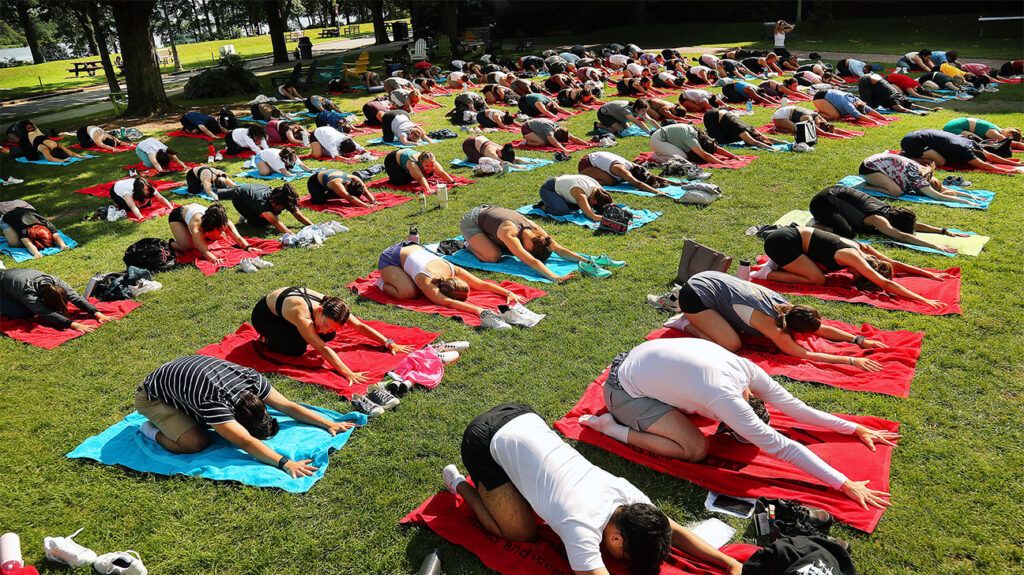Lifestyle factors such as regular exercise, sleeping position, lifting correctly, maintaining a moderate weight, and practicing proper posture may all help prevent and relieve lower back pain.
People with lower back pain may experience a dull, aching, or sharp pain in the lower section of the back. The pain can also radiate down to the buttocks, hips, and legs. The pain may be constant or come and go.
Various activities, lifestyle factors, and health conditions may cause lower back pain, including injuries or health conditions such as scoliosis or osteoarthritis.
Strengthening and supporting the lower back may help a person ease and prevent lower back pain. This article lists seven tips to prevent and relieve lower back pain and advises when to contact a doctor.

Getting regular exercise and staying physically active can support the back and
Yoga, tai chi, and weight-bearing exercises
Learn some exercises to strengthen the lower back.
Excess weight can place extra strain on the back, which
According to a
Eating a healthy diet, managing portion sizes, and getting regular exercise
Resources to help with weight management
It is important to get enough calcium and vitamin D in the diet, as they
Calcium and vitamin D help to strengthen the bones and prevent osteoporosis, which is a weakening of the bones and may cause back pain.
Fortified foods and drinks, such as some cereals and orange juice,
- dairy products
- fish, such as salmon and sardines
- leafy green vegetables, such as kale
- tofu with calcium
Sources of vitamin D include certain fish, such as trout, salmon, mackerel, and tuna.
If people cannot get enough vitamin D or calcium through diet, they can speak with their doctor about supplements.
Proper posture
- Sit or stand up straight rather than slouching.
- When sitting, keep the feet flat on the floor with the back straight against the back of the chair and, ideally, have the knees raised slightly above the hips.
- When standing, keep the shoulders back and the head up.
It can also help to take regular breaks to walk around and switch positions to avoid sitting or standing in one position for too long.
People can try ergonomic furniture, such as chairs that support the back while working and standing desks.
Learn about sitting positions for good posture.
If possible, avoid lifting heavy items. If people need to lift heavy items, it is important to lift them correctly to support the back. Use the following tips to lift heavy objects correctly:
- Engage the leg and abdominal muscles rather than using the back.
- Hold the item close to the body while lifting.
- Wear suitable footwear and keep the feet apart with one leg in front of the other for stability.
- Keep the shoulder facing the same way as the hips, with the head up, and avoid any twisting of the back or leaning to the side.
According to a
However, the review authors highlight that further research is necessary to confirm an association between lower back pain and poor sleep posture.
Getting enough quality sleep is also important, as poor-quality sleep
According to a
- increased frequency of coughing, which can increase pressure in the abdomen and negatively affect nerves, leading to pain
- smoking increases the risk of osteoporosis, which may cause lower back pain
- smoking can reduce blood flow throughout the body, which may negatively impact nerves and increase the risk of spine problems or injury
If people smoke, they can discuss ways to quit with a doctor or seek support from an organization or online resources.
People should contact a doctor if their lower back pain does not improve within 2 to 3 weeks with home treatment or if the pain worsens.
People should seek medical care straight away if they have lower back pain with any of the following:
- recent injury or accident, such as a fall, sports injury, or car accident
- numbness
- weakness
- tingling
- bowel or bladder problems
Many factors can contribute to or cause lower back pain, including lifestyle habits, health conditions, or activities such as heavy lifting.
Lifestyle and dietary changes may help to prevent and relieve lower back pain. This can include proper posture and sleep position, regular exercise, and maintaining a moderate weight to reduce pressure on the back.
If home treatments do not improve lower back pain within a few weeks, or if pain worsens, the person should contact a doctor.
People should also contact a doctor straight away if they have lower back pain after a fall or injury or if they have additional symptoms, such as weakness or numbness.
